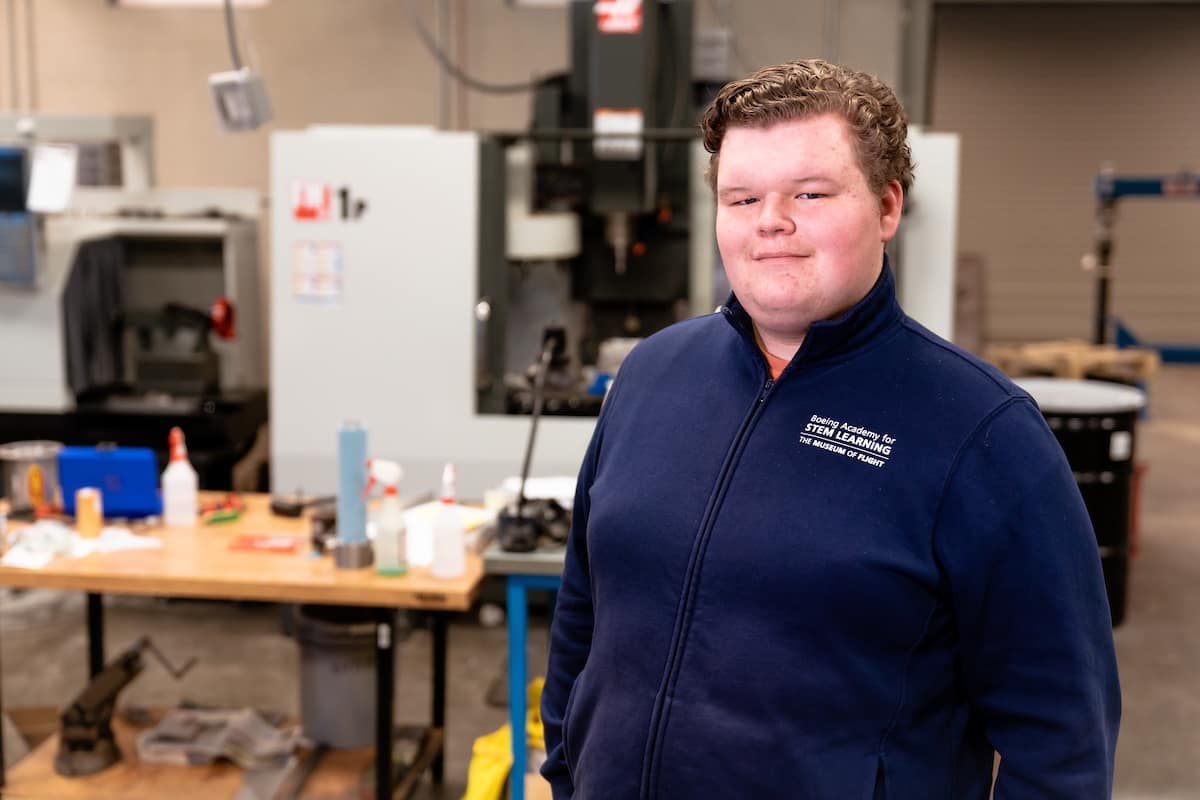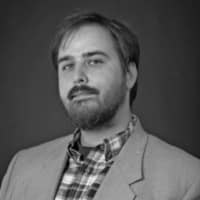Aerospace Engineering Sophomore Contributes Designs to Suborbital Research Payload

For some, the sky is the limit. For Joshua Carver, it’s just the beginning.
Carver, an Aerospace Engineering sophomore, has had a talent for aeronautics since elementary school. His school-wide reputation for innovating new paper airplane designs in the classroom led to his becoming known as “The Paper Airplane Guy” by his peers. After doodling a design for an airplane in his fifth-grade yearbook, he realized his calling was to become an aerospace engineer.
Childhood dreams took shape after Carver was accepted into Raisbeck Aviation High School in Tukwila, Wash. Upon graduation, his next steps were to apprentice at the Museum of Flight in Seattle before his acceptance into the Aerospace Engineering program at Embry-Riddle Aeronautical University.
Carver’s background and drive made him a natural candidate to collaborate on two Blue Origin suborbital research payloads designed to test the critical magnetic field of ferrofluids, or liquids that become strongly magnetized when in the presence of magnetic fields, in microgravity: RainierOne — launched on December 12, 2017, and RainierTwo — set to launch in the near future.
“The key is to see the difference in how the critical magnetic field forms and impacts ferrofluids in both Earth-like and zero-g conditions,” explained Carver. “The payload will fly on-board the Blue Origin New Shepard rocket, just as its predecessor RainierOne did. Unlike RainierOne, however, the scope and scale of what is being tested has been taken up to an entirely different level.”
Carver’s collaboration on the Rainier payloads began in 2016 with RainierOne, when he was tasked with designing the basic framework and interfacing methods that the experiment would connect to in order to fit inside the compartment on the New Shepard rocket. After structural and stress testing, Carver’s work on RainierOne was complete — but it was only a prelude to his continued work refining his designs for RainierTwo, a project which began in late 2017.
“On RainierTwo, I focused on modifying our design to reduce the overall mass of the payload to cope with the expanding requirements of our experiment,” said Carver. “Since most of the design was already mature from years of development, I spent a lot of time focusing on lightweight actuator designs along with material science and metallurgy. In RainierTwo, we set out from the get-go to make sure our payload could be ‘delivery proof.’”
From designing paper airplanes to suborbital research payloads, Carver’s development in the field came as a result of an endless thirst for knowledge of all things aerospace — a calling he hopes one day to turn into vocation.
“It’s not only my passion, but also my obsession,” Carver admits. “Aerospace Engineering is absolutely what I intend to focus on (after graduation), with the hope that I could be the ‘lead’ of varying projects and experiments. I would love to pursue a career at Raytheon, with the potential of branching out into other areas of aeronautics and astronautics later. But at the end of the day, my dream job really hasn’t changed much from what it was nine years ago.”
Carver continues to lay the ground work for his future with his research projects and studies at Embry-Riddle’s Prescott Campus, recently ranked as the Best Undergraduate Aerospace / Aeronautical / Astronautical Engineering Program in the nation by U.S. News & World Report. In his free time, Carver participates in project-based campus clubs like the Eagle Space Flight Team, a campus organization with the stated mission of becoming the first to put a student-designed-and-built rocket into space and recover it intact.
“What excites me the most for career life is the idea that every problem we solve is unique and is constantly progressing,” Carver said. “I’m just thankful for all the professors and mentors who put up with my questions and discussions after-hours. It means a lot to me, and I look forward to future discussions!”

 Keaton S. Ziem
Keaton S. Ziem